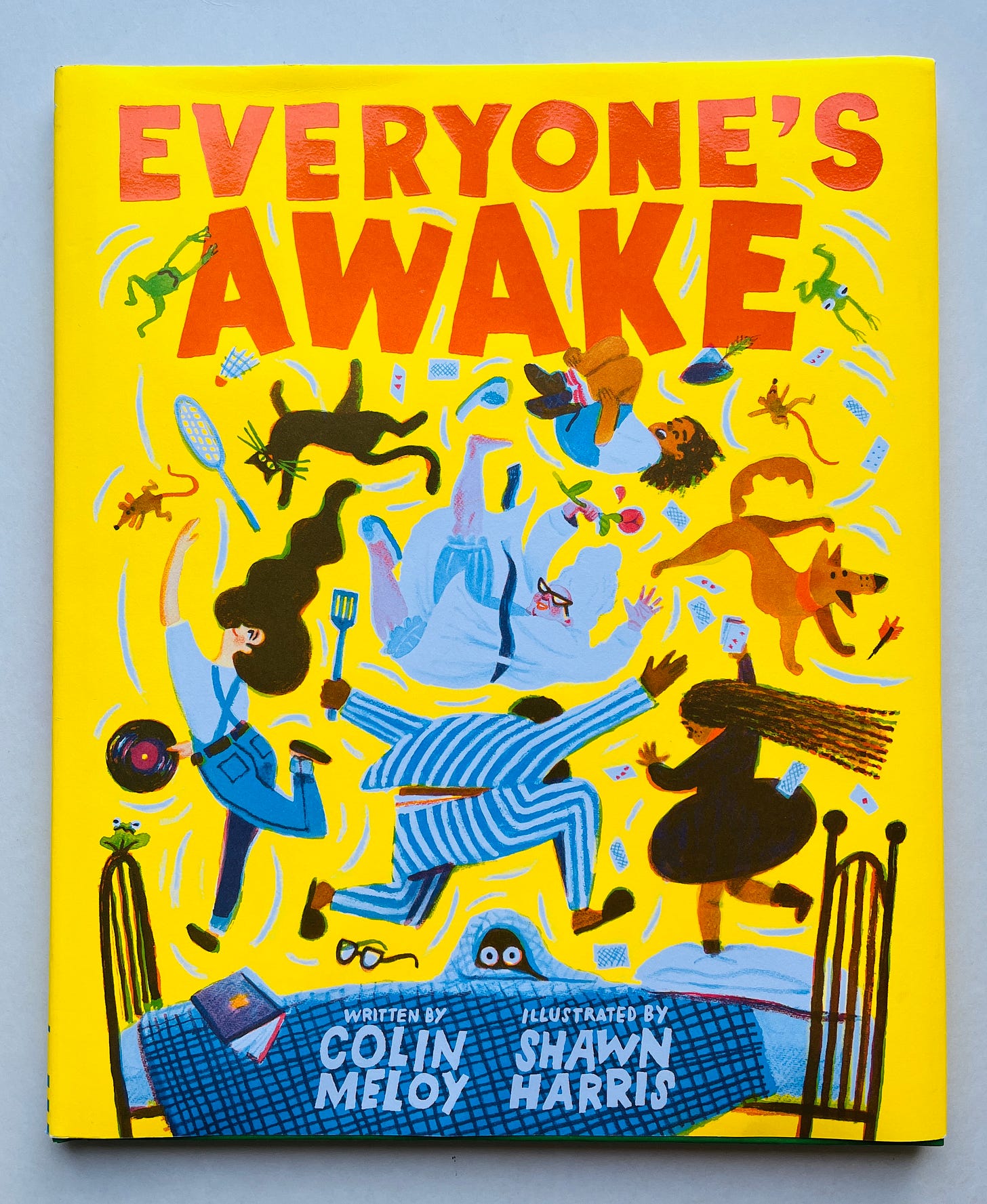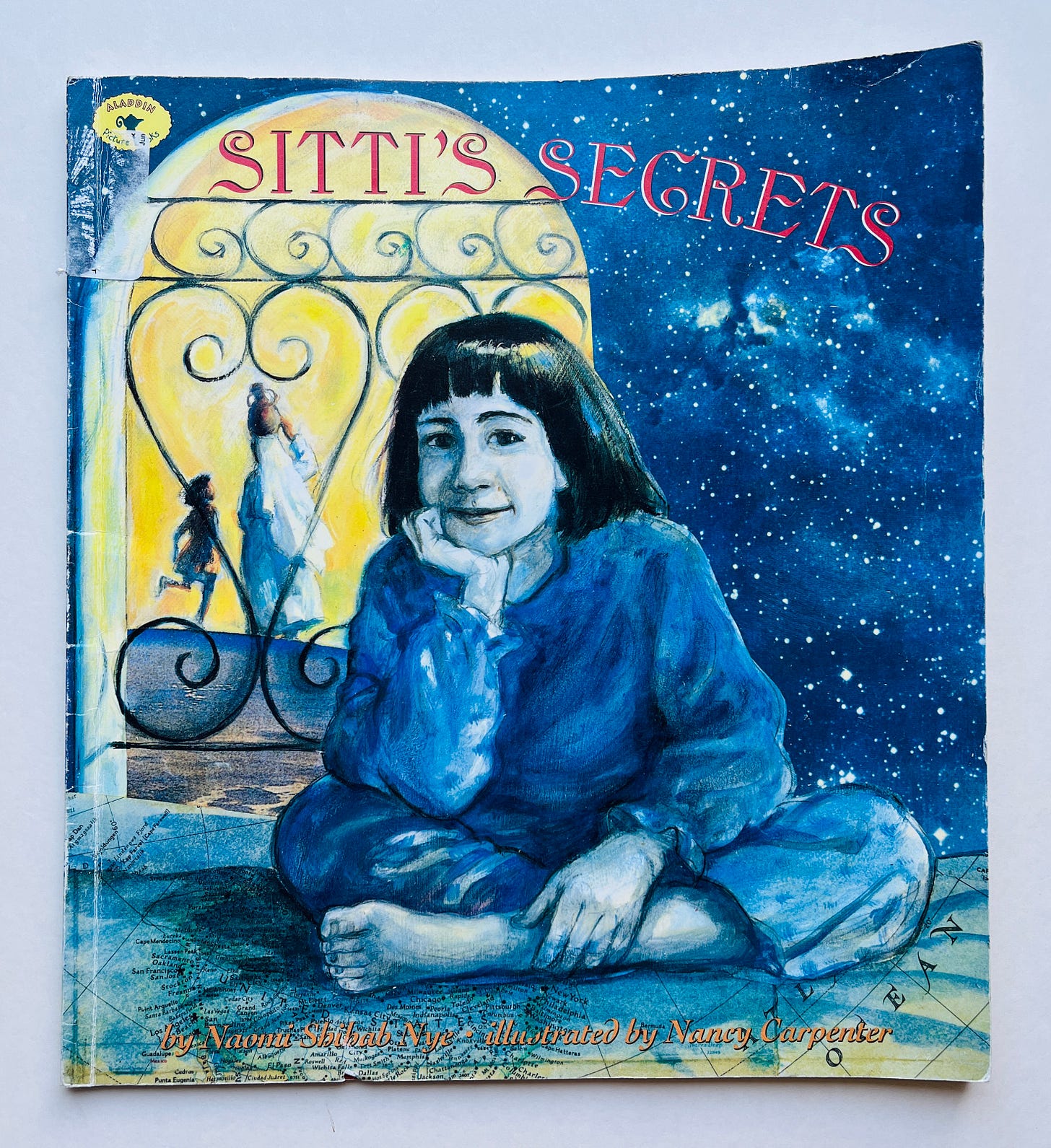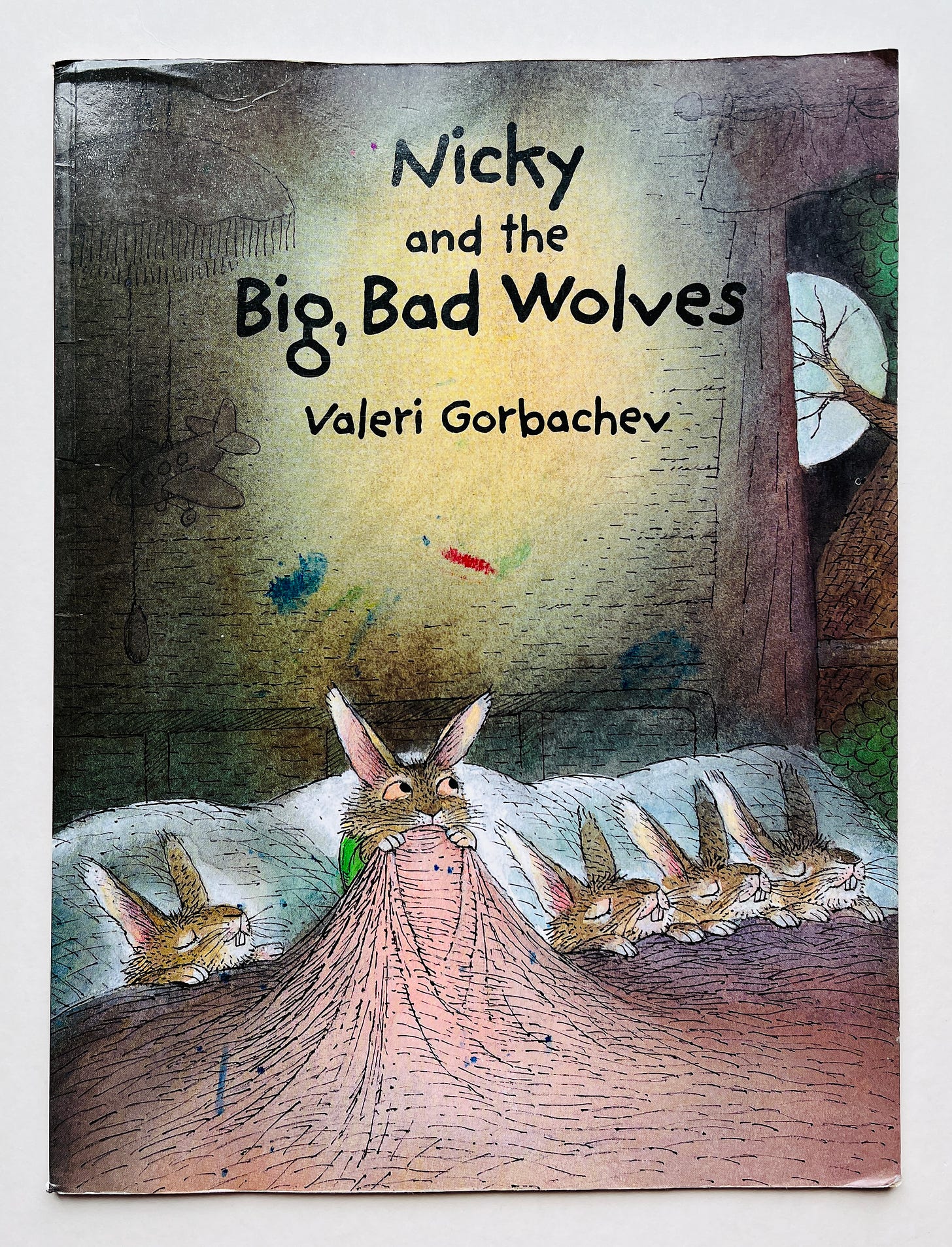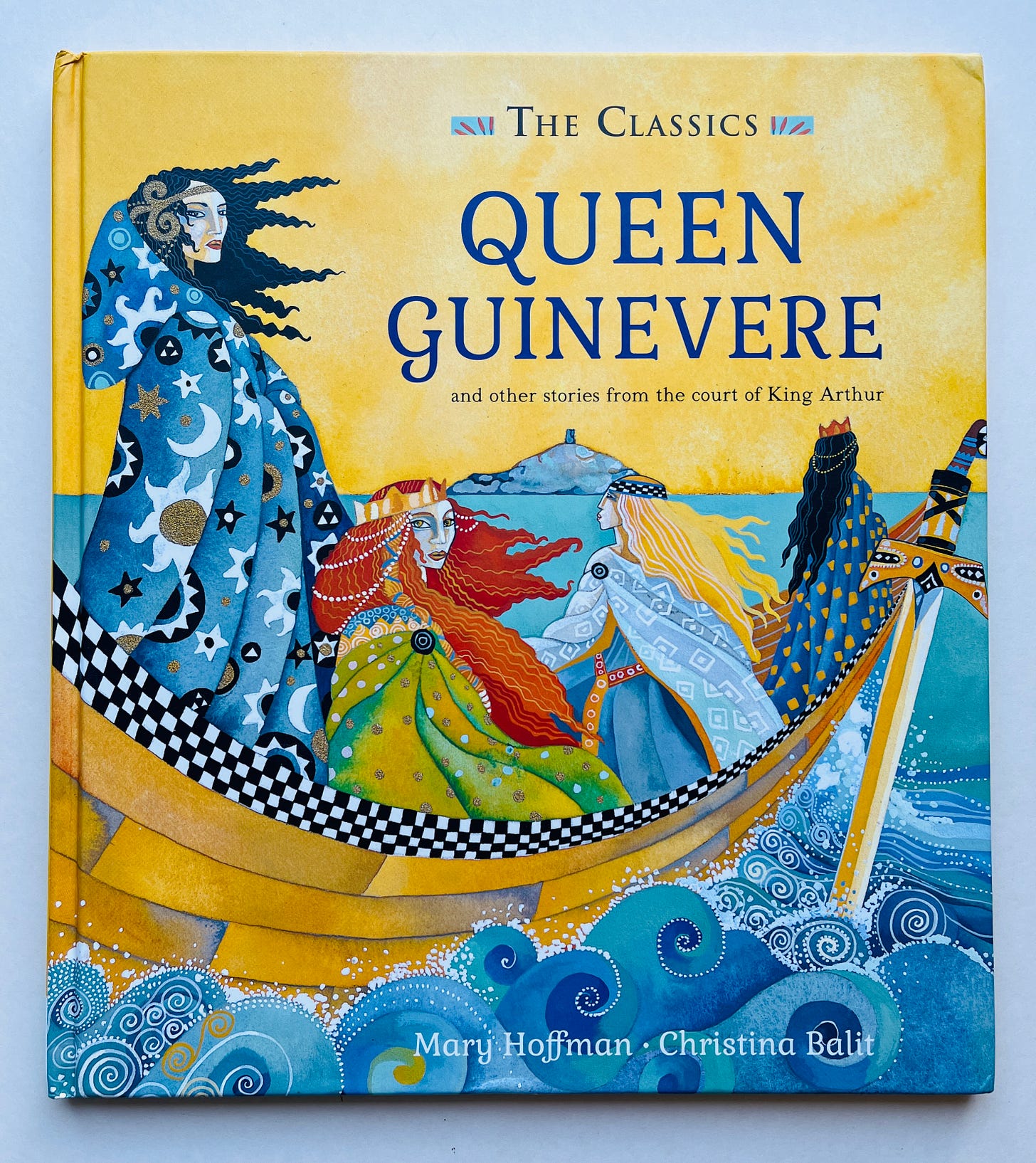Good morning!
I have to admit lately I have been feeling a bit overwhelmed with this newsletter. It’s not just that I’ve been traveling so much for work and pleasure, it’s that this is the time of year I start planning for the fall and winter, and I realize — once again — that the holidays come back-to-back-to-back, which means I have an enormous amount of work ahead of me. I have finalized all my recommendations between now and the end of the year, but it’s very much a feeling of standing at the bottom of a mountain, knowing I have to get to the top 🏔 I know I will get there — have gotten there many times before — but the view from here is daunting.
As you receive this, I am (getting over bronchitis) on a work trip, and I have two more trips to go before the end of summer. I also got elected to the board of a state-wide nonprofit involved in advancing library service, which requires learning a lot in a short period of time and getting up to speed with how to be the most useful director I can be (not to mention the fact that I have my own organization’s board to steward, including a multi-day retreat in October, which I have yet to plan, I just know it includes more traveling). Did I mention we have four family birthdays in September (including my 40th and my dad’s 80th), and that we’re taking a week-long vacation to Florida at the beginning of October? What even is time?
This is my way of saying: please be patient with me if I appear to be taking shortcuts with this newsletter — I am, in fact, taking shortcuts with this newsletter.
Between now and at least Thanksgiving, there will be more guest posts and collaborations and open threads than usual.
If you’re a paid subscriber, Notes From the Reading Nook, the theoretically shorter posts I publish every Tuesday, may be even more so.
Regular issues on Wednesdays will be more concise🤞
(Perhaps not a bad thing — my reviews have gotten longer and longer as time has gone on, and in the sense of working on my writing, I need to discipline myself toward greater brevity and be more judicious when I edit and prune. I can hear Strunk and White in the back of my brain: “Omit needless words and avoid a succession of loose sentences. THAT MEANS YOU, SARAH MILLER.”)
The one area I will not reduce is my seasonal and holiday coverage, which is maybe ironic given that those issues require the most work by far. But: I am, let’s say, implementing efficiencies in my regular programming so I have the time and energy to continue to write those large special editions. I enjoy them as much as you do — even if, this time of year, they make me go a little googly-eyed when I think of them all together, fall + Halloween + Thanksgiving + Christmas + winter 🤪
(If you don’t receive all of my special editions, it’s probably because you’re a free subscriber. If you’d like to upgrade to paid — and receive every seasonal and holiday issue — you can do that here.)
Thank you for your ongoing support 🙏 Thank you to every one of you who writes back to me or leaves a comment filled with enthusiasm and kindness. Thank you to my paid and free subscribers alike. Knowing that you’re on the receiving end is truly the thing that keeps me going, even when it’s hard.
Everyone’s Awake by Colin Meloy, illustrated by Shawn Harris (2020)
The crickets all are peeping.
The moon shines on the lake.
We should be soundly sleeping.But everyone’s awake.
Dad had done the dishes.
Mom had locked the doors.
I was snuggled up in bed
listening for the snores
of all my fellow housemates
till it occurred to me
that all my fellow housemates
were as wakeful as could be!
For any family — or houseful of people (roommates, anyone?) — who has ever experienced a sleepless night in a crowd, this rollicking romp of a book offers a farce full of delight.
Everyone’s awake and doing all the wacky things you do in the middle of the night when you can’t sleep — bake bread (Dad), tap dance to Prince (Mom), floss your braces and recite Baudelaire (sister), work on your needlework (Grandma), make lists of all the books you’ve read (brother), drink eggnog (the dog). Harris depicts every moment of this chaos in grayscale plates rendered with India ink, charcoal and pencil that increase the sense of action, motion, and exhaustion until finally, just when the sun comes up, everyone falls asleep.
Undoubtedly, some zany books spend more time trying to be funny than focus on the rhythm of the read-aloud, but I’ll credit Meloy’s songwriting ability here in deftly juggling comedy and rhyme — there’s a lot happening, and both the action and prose are full of fun. (I recommend this mostly for preschoolers but last night when we were reading it, my 8yo said twice, “I LIKE this book!” So what do I know?)
Sitti’s Secrets by Naomi Shihab Nye, illustrated by Nancy Carpenter (1994)
There are many miles between Mona, a young girl in the United States, and her Sitti, her grandmother in Palestine — as well as fish and cities and buses and fields and many more things.
But once, Mona visits her Sitti, and they figure out how to speak to each other despite not knowing one another’s language: Mona says “Sitti,” which means grandma in Arabic, and her Sitti calls her “habibi,” which means darling. Soon they invent their own language, using universal gestures, noises, and other body language to bridge the communication gap with congeniality and humor. While visiting, Mona meets her cousins and tags along while her Sitti does chores, observing the ways that life is different “on the other side of the earth” and enjoying all the new sights, sounds, smells, and experiences (brought to life through Shihab Nye’s gorgeous, sensory prose and Carpenter’s equally lush multimedia illustrations).
When Mona returns home, she decides to write a letter to the president of the United States, telling him about her grandmother in Palestine, casting her vote for peace and later, dreaming of her Sitti.
This gentle, lovely look into the lives of one Arab American family and their Palestinian roots offers a glimpse of the ties that bind family to one another — not language, not weather, not clothing, but food and tradition and, of course, love.
Nicky and the Big, Bad Wolves by Valeri Gorbachev (1998)
It’s no secret that I am an unabashed fan of the highly-underrated Valeri Gorbachev — his picture books are, without exception, adorable and beloved by littles who are lucky enough to encounter them.
Here, readers meet Nicky, a small bunny with a big imagination. As he tries to go to sleep one night, his mind runs away with his fears — after screaming for her, he tells his mother, at first there are one hundred wolves chasing him through the forest, then fifty racing after him on motorbikes, then fifteen following him on a pirate ship, cutlasses out, then five descending on him from a hot air balloon, until they surge back to one hundred right outside the window, and his (clever) mother goes out to chase them all away.
Gorbachev’s biggest gift is in acknowledging a common childhood fear, which can feel so very real to young children, with maximum humor — he wrings out every last ounce of Nicky’s exaggeration in his warm, funny watercolor illustrations — the result of which is that the scary thoughts feel less so, page by page.
Not saying this is a perfect panacea for restless or fearful sleepers, but it is a gentle way to talk about an eternal problem for some toddlers and preschoolers. And long-suffering caregivers might find some relief in this title, too.
(If you like this one, be sure to check out Little Bunny’s Sleepless Night by Carol Roth, illustrated by Gorbachev, which I reviewed in issue No. 59)
Queen Guinevere and Other Stories from the Court of King Arthur by Mary Hoffman, illustrated by Christina Balit (2000)
A few years ago my eldest daughter became interested in King Arthur stories — I can’t remember how, but it seems to happen to many kids at some point or another — and that was just fine with me, as Arthurian legends are not only an important part of Western literature, but they are dang good stories, full stop.
I personally have always been more — I should say most — interested in the women of these classic stories: Morgan Le Fay; Nimue, but especially after she became the Lady of the Lake; Ragnelle; Morgause; Elaine of Astolat, if you’re asking me to rank them in order. (I once wrote a long paper on “The Lady of Shalott,” which features the Elaine of my list, which I mention because there are a whole boatload of Elaines in Arthurian legends — seven? eight? Anyway, I am waiting anxiously to share the 2005 version of that poem illustrated by Geneviéve Cote with my kids — I know, I know, it’s tragic and probably not at all appropriate for children except that she rebels and escapes! Maybe I should just go full-on “My Last Duchess,” hmm? A million bonus points if you’re following me right now. Come sit by me.)
I digress. (I am working so hard not to, I swear.)
Hoffman’s Queen Guinevere and Other Stories from the Court of King Arthur is the only book I’ve ever found that focuses not only on Guinevere, but eight additional strong, smart women — Igrayne, Nimue, Lyonet, Morgan, Morgause, Elaine (of Astolat), and Ragnell. These stories are, quite literally, told in the voices of each of these figures. Much to my delight, my daughters enjoy the shift in perspective away from Arthur and his knights, while still retaining the high drama of love, hate, envy, conspiracy, magic, and tragedy that echo down the ages.
Balit’s digital illustrations are meant less to flesh out all the details and more, it feels like, to put faces to names — this is primarily a read-aloud or read-alone book for elementary-aged children who don’t necessarily need the images to make sense of the plotlines — but what is there adds a flash of timeless intrigue and enchantment. Which is, after all, what makes the legends themselves so appealing to begin with.
I’m here for any narrative, real or imagined, that takes a male-centric story and viewpoint and repositions it. Hoffman has very successfully given these unshakeable, spirited women — sidelined for centuries in these most famous of medieval romances, room to tell their own stories, in their own voices.
It’s about time.
Every Wednesday issue is free, so if you know someone who might like this newsletter, please send it their way 📩
Thanks for reading!
Sarah









New subscriber here, and I love your authenticity! It’s hard to find that balance between getting it done and staying sane. I’m sure I will enjoy the condensed versions just as much (but I’m not totally in the Strunk & White club--I love all the asides!).
Thanks for all that you do--because READING!!!
You do fabulous work! But take some fabulous slow and rest, too!